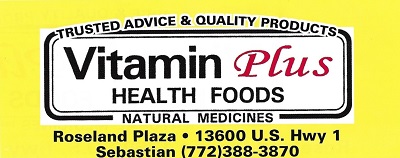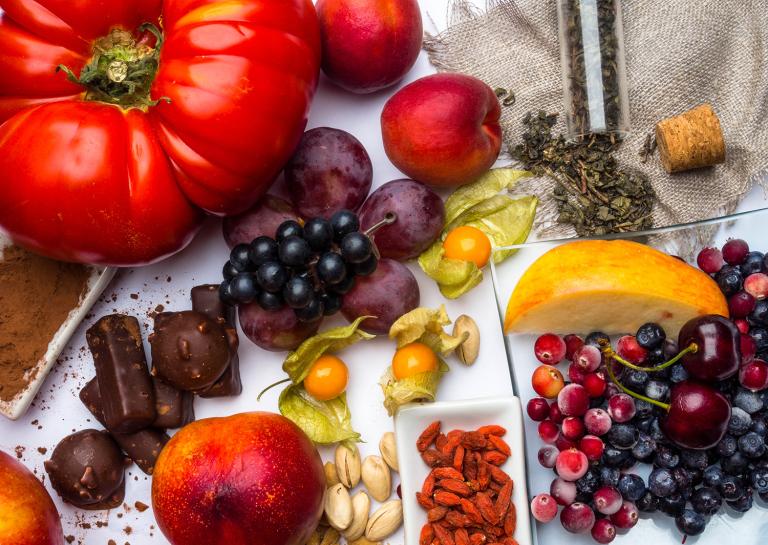I don’t blame you for not knowing about oligomeric proanthocyanins. Say that three times fast—what a mouthful! It is a lot easier to call them by their abbreviation: OPCs. These tongue-twister polyphenols are special compounds found in just a few places that, with proper dosages, have incredible benefits for heart disease, cancer, liver problems, and more. In fact, one could argue for their place in just about any health protocol for any health condition because they work at such a foundational level.
What Are OPCs?
OPCs are a specific type of plant compounds called polyphenols. There are some amazing plant medicines that are polyphenols. Red wine, green tea, coffee, and dark chocolate contain polyphenols, and are all personal favorites of mine! Turmeric contains curcumin, which is itself a polyphenol. Polyphenols provide various medicinal health benefits, and are powerful antioxidants.
But like cousins in a big family who share some similarities, they also have individual characteristics that differentiate them from their kin. One cousin might be amazing at playing the clarinet, another might paint beautiful portraits, and yet a third hit the bull’s-eye with an arrow every time. This is also true of polyphenols—their individual characteristics allow them to shine.
Health Benefits of OPCs
OPCs are powerful medicine and can be a part of virtually any health protocol. However, they especially shine for:
- heart disease
- lowering blood pressure
- stabilizing blood sugar
- liver disease
- cancer
Don’t be afraid to combine OPCs with other polyphenols, such as ECGC from green tea or curcumin from turmeric, for even more powerful benefits.
As you may have already guessed, OPCs are a group of polyphenols that have been found in three plants: grape seeds, pine tree bark, and the red outer skins of peanuts. We have to go back some decades to understand how these natural medicines came to be, since none of these sources have been commonly consumed as part of the diet.
How Were OPCs Discovered?
Dr. Jacques (Jack) Masquelier, a French scientist, was working on the isolation and description of a nutrient we now know of as OPCs as early as his doctoral research in 1948. He spent many years exploring the understanding of these unique nutrients and the health benefits they confer.
Some of his earlier findings were that OPCs can strengthen blood vessels and vascular function, which impacts every health system in the body.
The applications for prevention and treatment of heart disease followed, and, in the 1980s, the incredible antioxidant potential for OPCs was defined, making them useful for nearly every degenerative disease, and even for slowing the aging process.
Supplements with OPCs
Today, there are OPCs in two different kinds of supplements: Grape seed extract and French Maritime pine bark extract.
Two of the branded raw materials mentioned in studies are Leukoselect and VX1.
No one works with peanut skins, but remember that mention, because we will be talking about peanuts more later.
Types of OPC Supplements
-
Pine Bark Extract
French Maritime pine bark (Pinus pinaster) has been on the market a few decades, and has clinical research in many health conditions, including issues with blood vessel health, such as hypertension, chronic venous insufficiency, hemorrhoids, blood vessel diseases of the eye, Reynaud’s disease, erectile dysfunction, and blood clot prevention.
The branded raw material used in most of the research is called Pycnogenol, though there are other bark extracts available as well. One downside of sourcing trees for supplements is the sustainability issue, as trees grow more slowly than other crops.
Two recent colorectal cancer studies focused on the pathways by which French grape seed VX1 works to downregulate tumor formation pathways. They found that these OPCs affect several key cancer-associated genes and can reduce tumor formation by 65 percent in an animal model of colorectal cancer.
-
Grape Seed Extract
The other major source of OPCs is grape seed. Grape seeds are harvested annually for food and wine. Though red wine may contain grape seed elements, white wine does not.
For the most part, we don’t have grape seeds in our diet. There is an enormous amount of clinical data for the OPCs delivered in grape seed extract, including cardiovascular issues, cancer care, diabetes, and inflammation.
Choosing an OPC Supplement
-
Pine Bark or Grape Seed?
What distinguishes OPCs from pine bark from OPCs from grape seed? It turns out that these OPCs are the same but in somewhat different ratios. There has not yet been research to understand these factors as they relate to disease. Both have published human trials proving their effectiveness, and both have a great deal of supporting science. Therefore, either source is good and legitimate medicine. However, the amount of OPCs in an extract can vary greatly. The best have more than 99 percent polyphenols, of which at least 80 percent are actually OPCs. Unstandardized extracts may have no OPCs at all.
-
Absorption and Bioavailability
OPCs are like dogs. They come in all sizes. Some are Great Danes and some are Chihuahuas. They are both dogs, but only the Chihuahua can squeeze through a tiny doggy door, while the Great Dane is left outside.
Likewise, very large OPCs cannot squeeze through the doors in our intestines and are not absorbable. The largest OPCs are tannins, which are not dangerous, but are not medically useful, either.
In order to get consistent health benefits, OPC size should be standardized for only small, absorbable OPCs and be tannin free.
-
Product Adulteration
Unfortunately, with the increased popularity of OPCs, there is a great deal of adulteration of these products.
In 2015, independent researchers analyzed 21 grape seed extracts. Their results were surprising. Of the 21 products they evaluated, 15 had significant quality challenges and 6 were adulterated with high levels of peanut skin!
This is problematic on many levels, especially for people with peanut allergies. It is important to work with quality companies that verify the authenticity of their grape seed or pine bark extracts.

